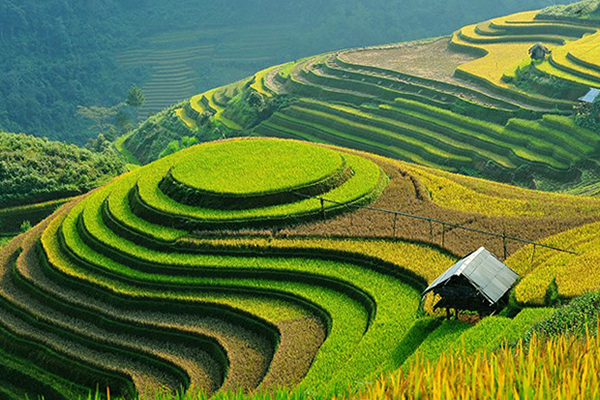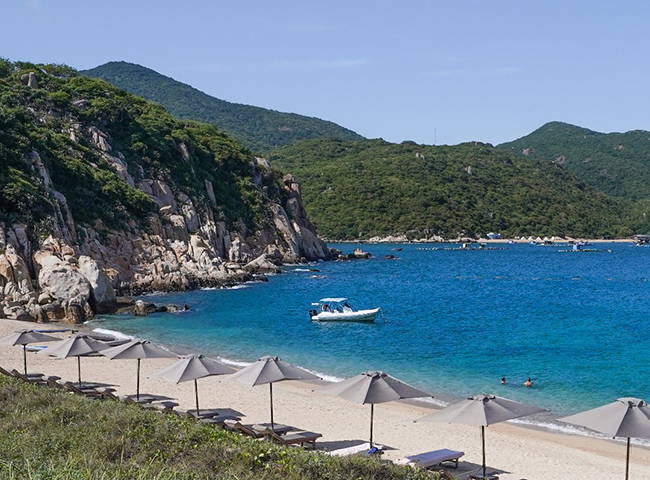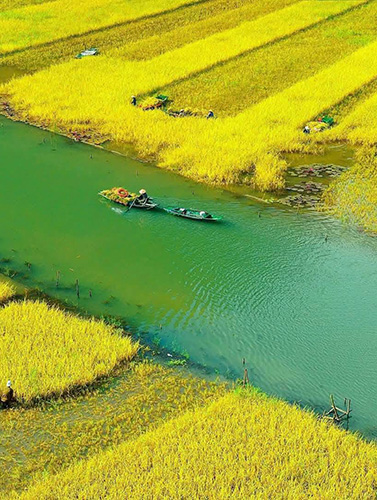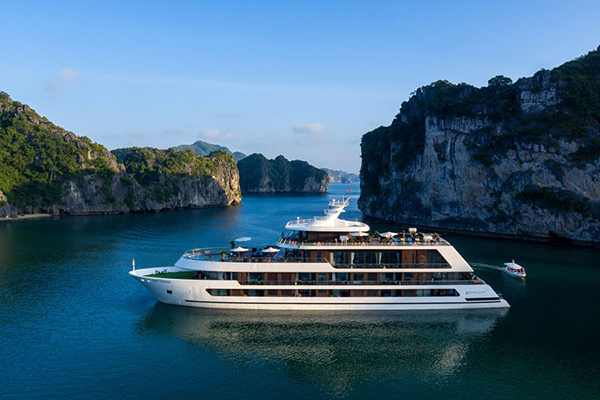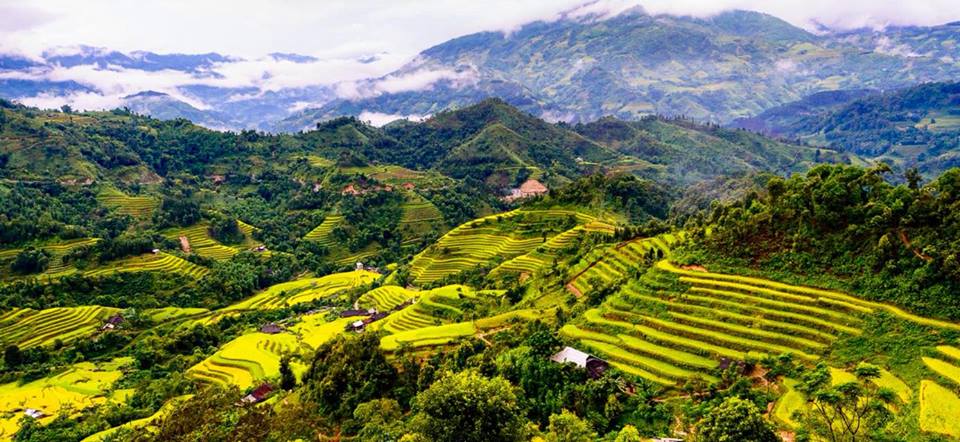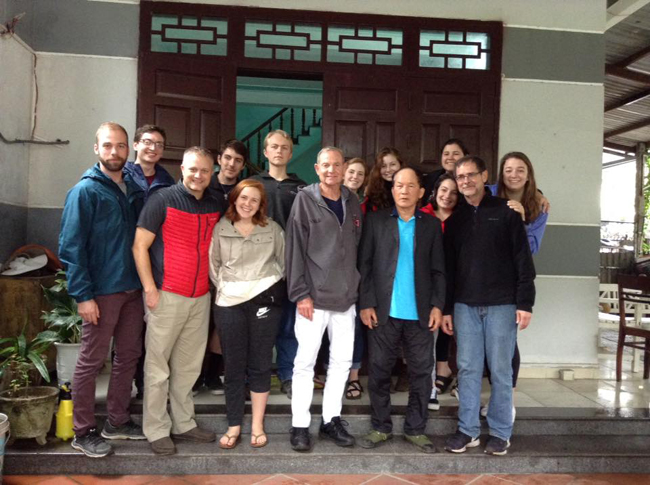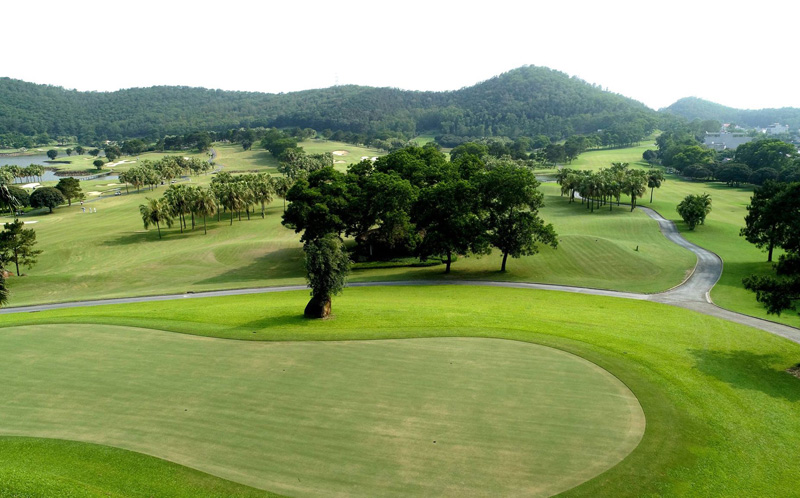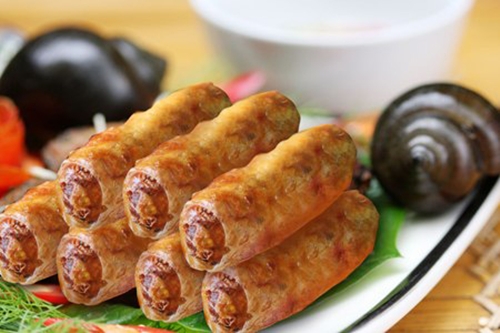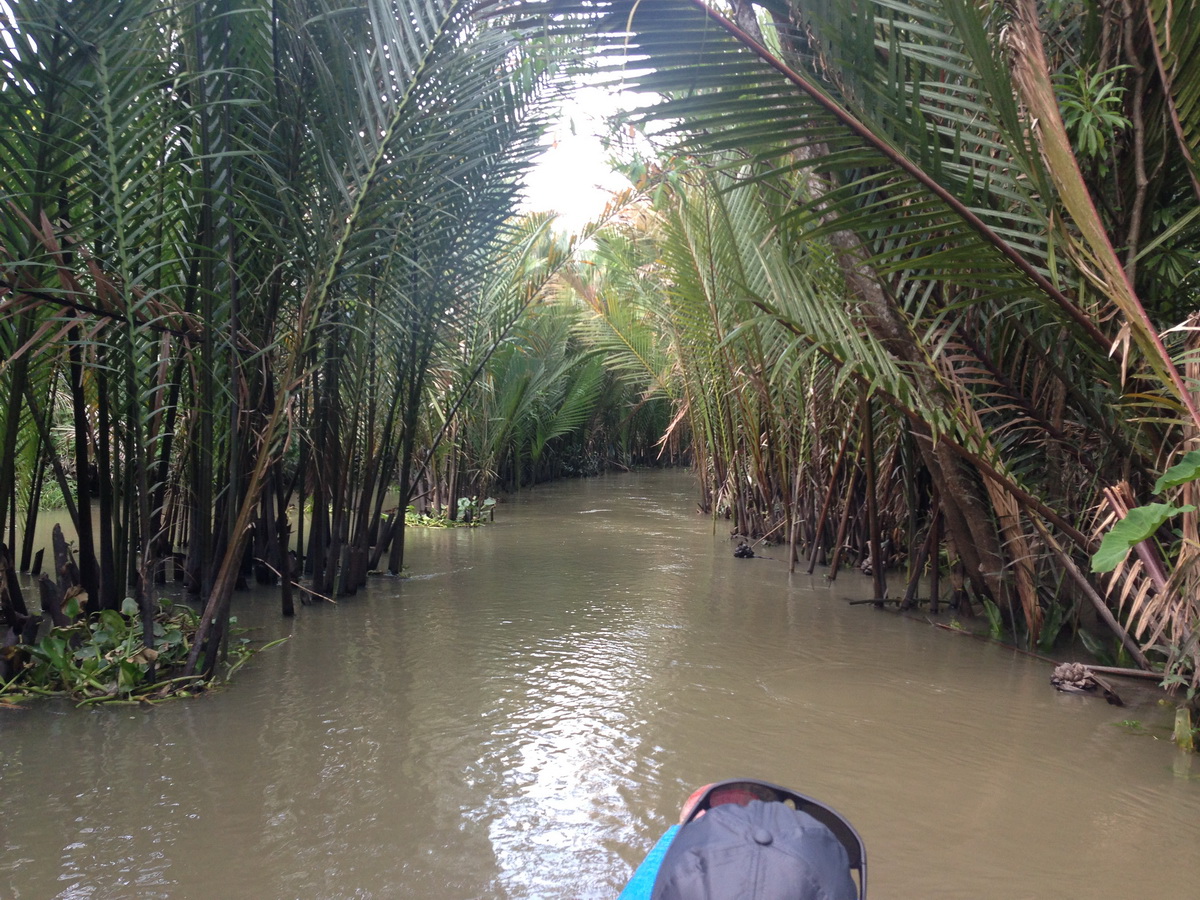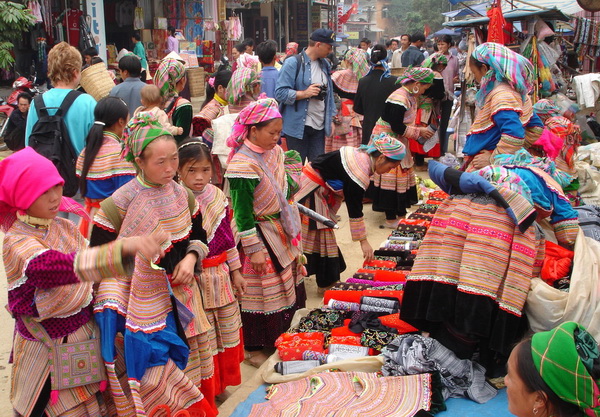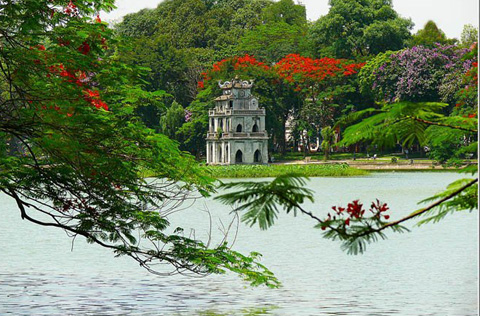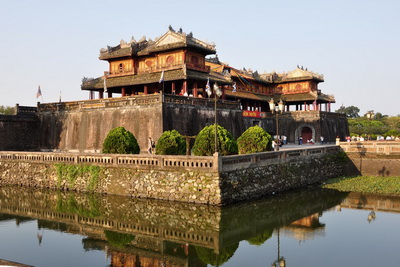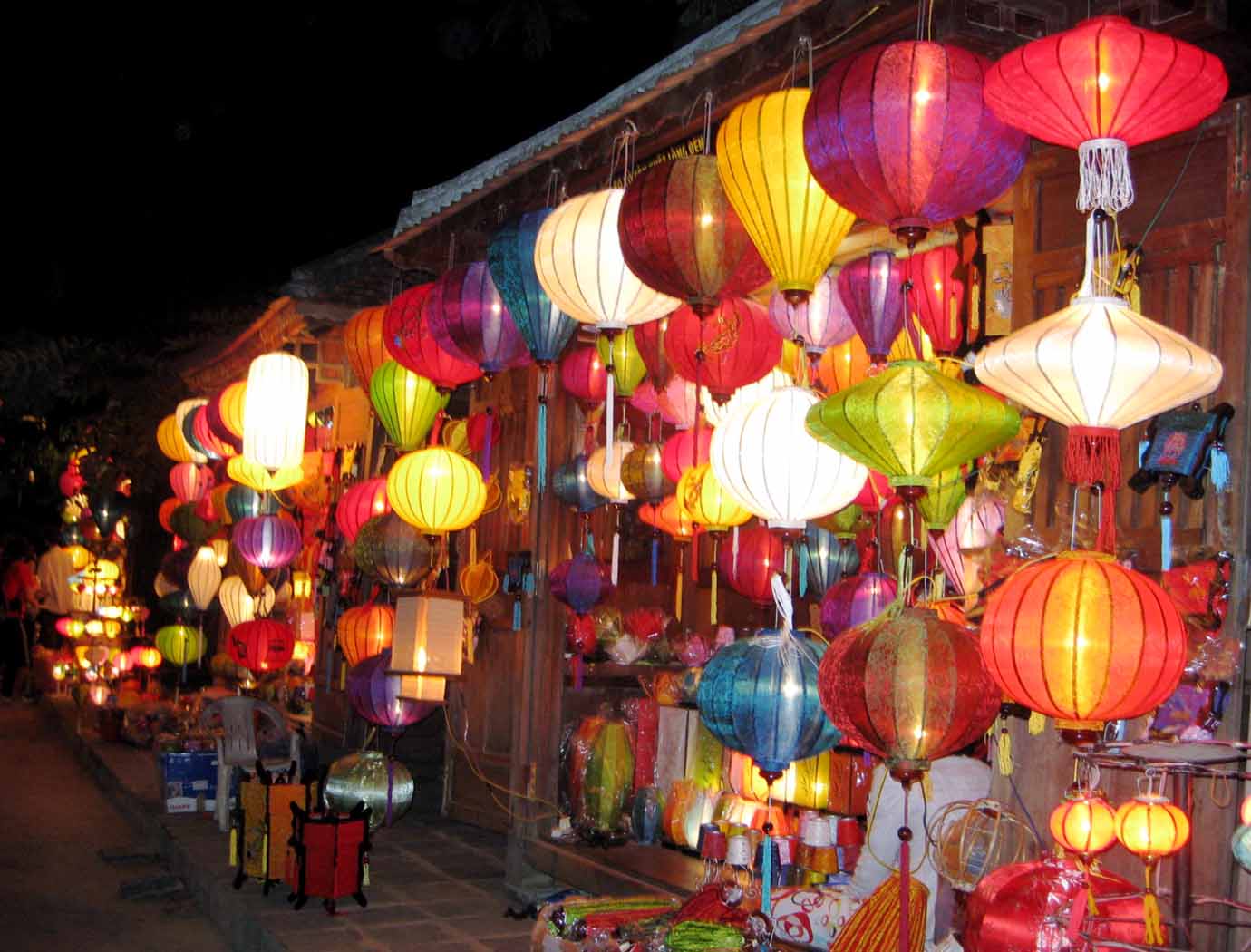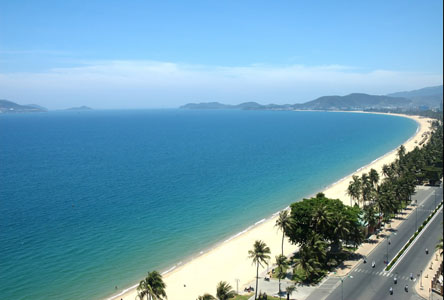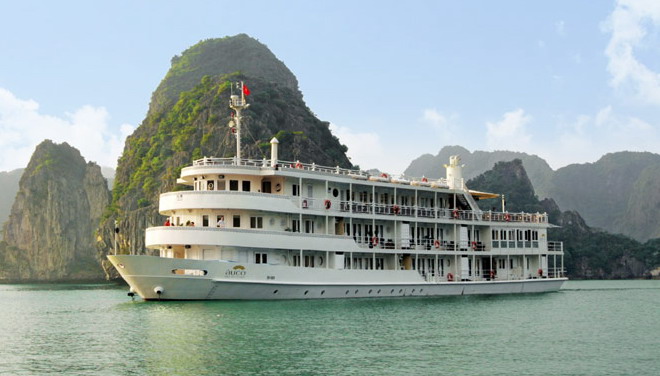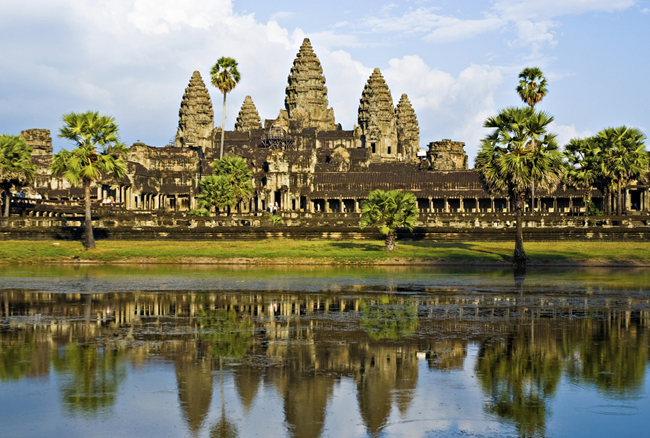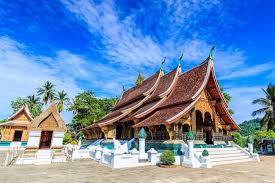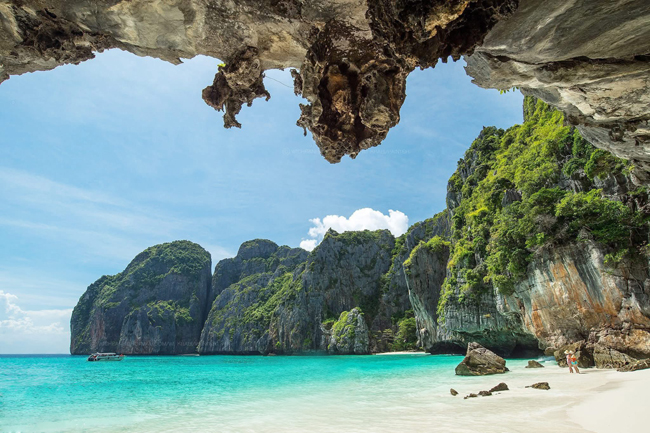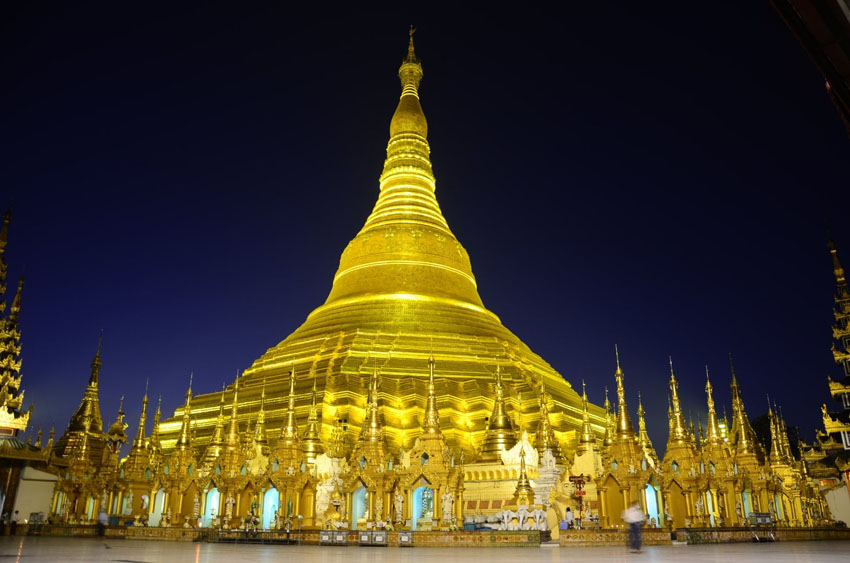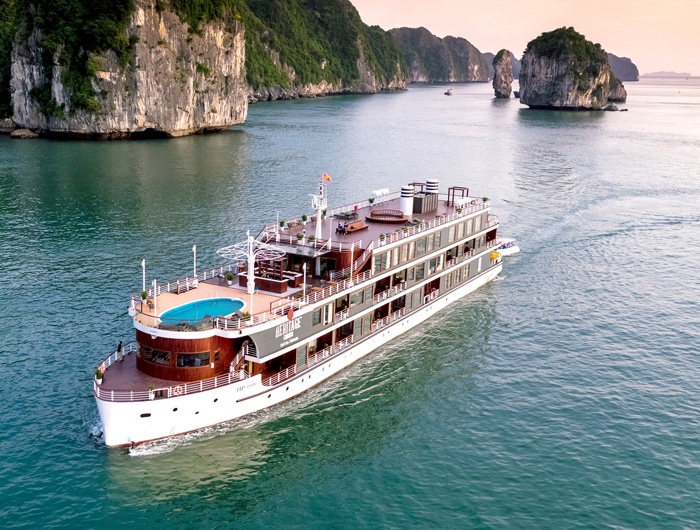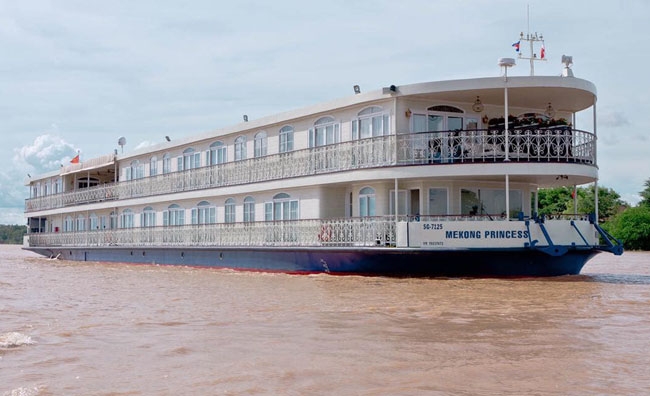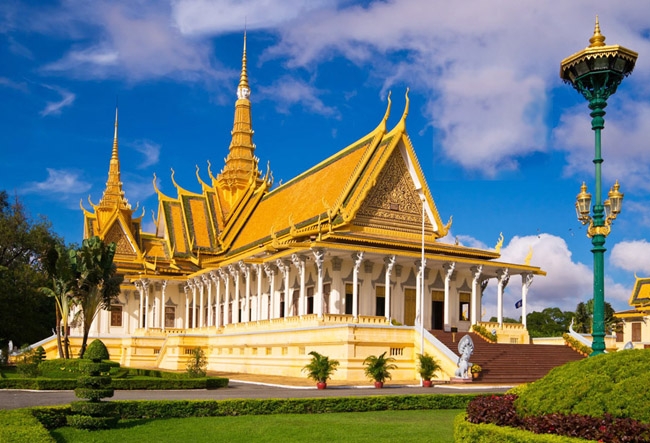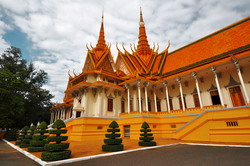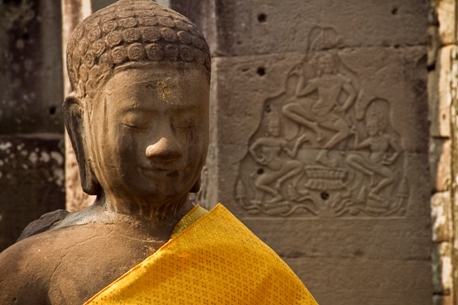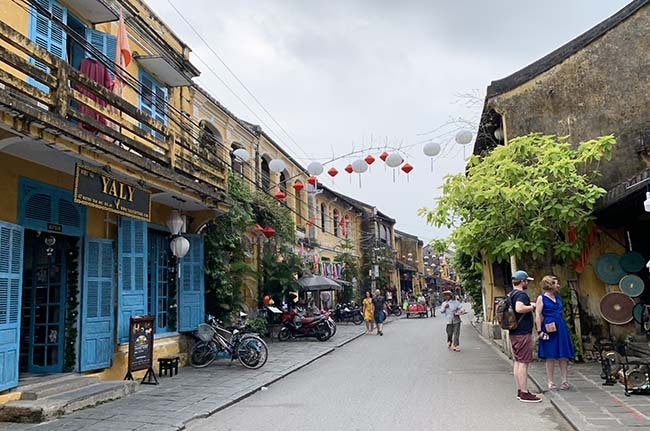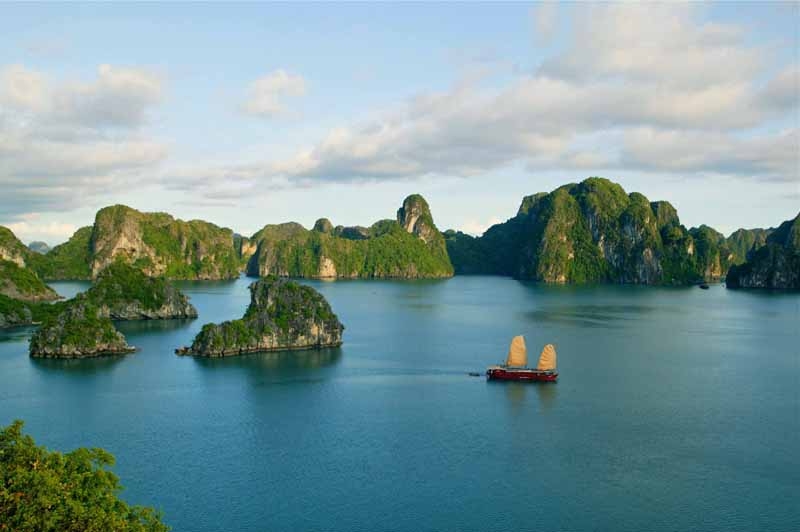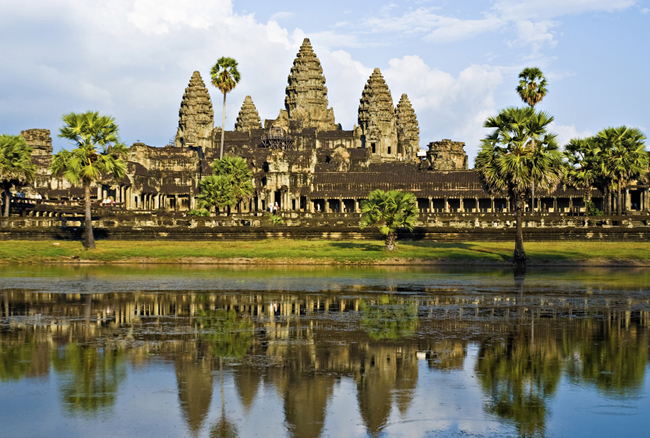The Royal Palace of Cambodia
The Royal Palace of Cambodia is a complex of buildings which serves as the official royal residence of the King of Cambodia. It was constructed by King Norodom between 1866 and 1870; this original palace was largely demolished and rebuilt between 1912 and 1932, It is situated at the Western bank of the confluence of the Tonle Sap River and the Mekong River called Chaktomuk. It features grand pavilions, pagoda, gardens, small museums, art galleries, and more. The grounds are quite large, spread over four compounds with over 50 noted points of interest. Its full name in Khmer is the Preah Barom Reacheaveang Chaktomuk Serey Mongkol. The Cambodian monarchs have occupied it since it was built in the 1860s, with a period of absence when the country came into turmoil during and after the reign of the Khmer Rouge.
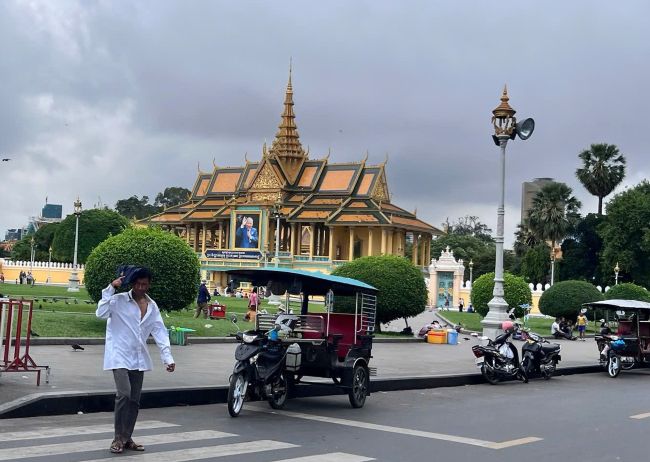
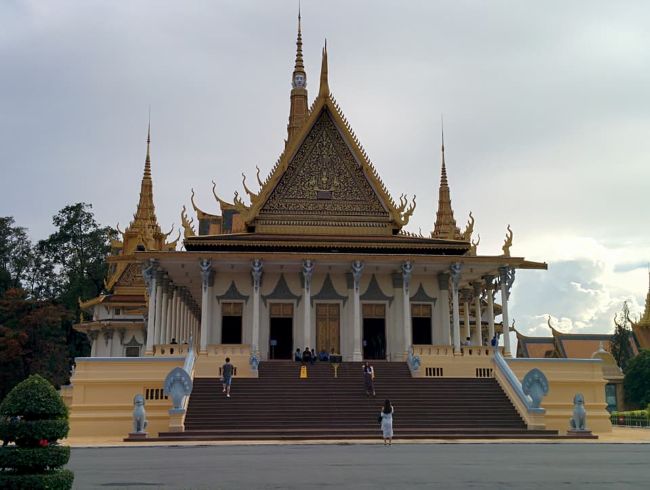
The complex is divided by walls into four main compounds. On the south side is the Silver Pagoda, to the north side is the Khemarin Palace and the central compound contains the Throne Hall and to the west is the private sector or the Inner Court. The buildings of the palace were built gradually over time, and some were dismantled and rebuilt as late as the 1960s. Some older buildings date back to the 19th century.
The Silver Pagoda
The Silver Pagoda is located on the south side of the Royal Palace, it is more formally known as Wat Preah Keo Morakot, which means the temple of the Emerald Buddha. This is not the same Emerald Buddha that now resides in the Grand Palace in Bangkok, but a different 60 cm tall green crystal Buddha statue made some time during the period from 17th to 19th Century. The origins of the statue are the subject of debate, with one of the candidates for having produced the statue being a French manufacturer of luxury glass goods. Either way, this is one of the most important religious artefacts in Cambodia.
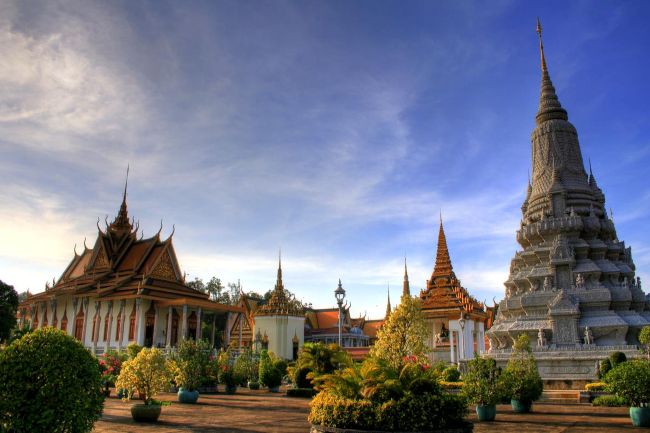
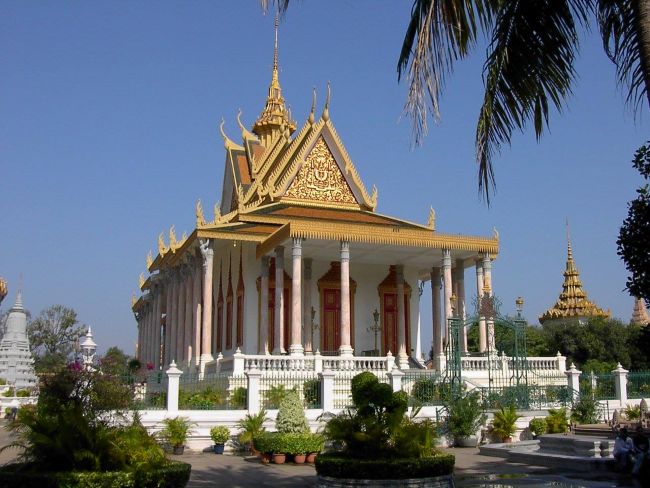
Throne Hall
The Throne Hall or other name The Preah Tineang.Tevea Vinnichay Mohai Moha Prasat, It is the main attraction of the Royal Palace Complex where the king's confidants, generals and royal officials once carried out their duties. It is still in use today as a place for religious and royal ceremonies as well as a meeting place for guests of the King. Inside the Throne Hall, you’ll find three royal thrones. One with Western influence. And, two in traditional Khmer style. Along with golden busts representing Cambodian monarchs from the reign of King Ang Duong onward.
Khemarin Palace
The Khemarin Palace is the common English name for a building called in Khmer Khemarin Moha Prasat, serves as the official residence of the Cambodian king and this is where King Norodom Sihamoni stays at present. The single spire at the top of the palace is what sets it apart from the other buildings inside the palace complex.
Moonlight Pavilion
The Preah Tineang Chan Chhaya or "Moonlight Pavilion", is an open-air pavilion that serves as stage for Khmer classical dance in the past and present. The venue is most popular for showcasing classical Khmer dance performances.
The pavilion was a part of the Royal Palace in Phnom Penh during its initial days, it was later demolished and reconstructed under the rule of King Sisowath. The original pavilion featured wooden construction, but the modern avatar is drastically different in terms of construction and much bigger too. The pavilion hosts royal and state banquets as well and it was used during the coronation of Norodom Sihamoni, the current king of Cambodia.
Napoleon Pavilion
Napoleon Pavilion located to the left of the throne room, was offered as a gift of the Emperer Napoleon III to King Norodom in 1870. This pavilion with its original iron architecture was built to welcome Napoleon's Wife Empress Eugenie during the inauguration of the Suez Canal.
Other structures
Other structuew include, Hor Samran Phirun, Hor Samrith Phimean, Damnak Chan, Phochani Pavilion (dance hall), Serey Monkol Pavilion (royal conference hall), King Jayavarman VII Pavilion, Vihear Suor, a royal chapel built as a votive chapel of Wat Vihear Suor, Villa Kantha Bopha, Villa Chumpou, Villa Sahametrei, and some less significant buildings in an area closed to the public.
Visiting the Royal Palace
Ticket Price: $10 USD
Open Hours: 8:00 – 11:00 & 14:00 – 17:00
Best time to visit: early morning to avoid the heat, or late afternoon for nice photos as the sky softens around 4 pm. The length of a visit is from 1,5- 2 hours
Take a bottle of water; take off your shoes before entering shrines; do take a hat but take it off before entering inside shrines and especially the pagoda; moderate dress (elbows and knees covered as you would when entering a monastery); be mindful of sections where photos are not allowed; don’t touch the murals and glass cabinets; no smoking,

